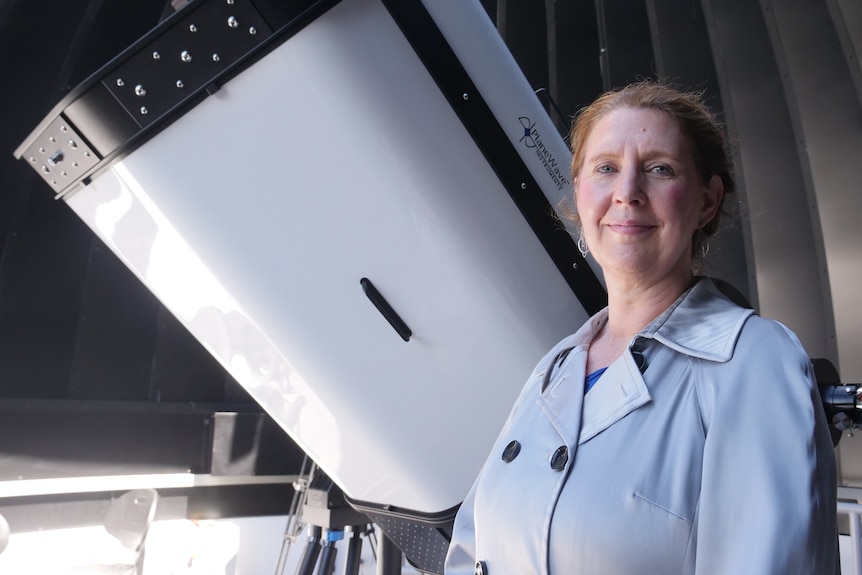More than half a century after a tracking station in the ACT’s Namadgi National Park broadcast the grainy footage of Neil Armstrong’s first steps on the moon, a new telescope will allow Canberra to play another starring role in space communications.
Key points:
- A new telescope at Mount Stromlo will give researchers thousands of times more information
- The Quantum Optical Ground Station, where the telescope is housed, can provide high-quality video transmissions from space
- Professor Anna Moore of the ANU says it’s a world-first in terms of global communication capability
The telescope is part of the Australian National University’s (ANU) new Quantum Optical Ground Station at Mount Stromlo Observatory, and uses adaptive optics and lasers — rather than the traditional radio waves — to send and receive data from space.
Director of the ANU Institute for Space, Professor Anna Moore, said the telescope will allow them to video “the next astronauts operating and living on the moon”.
“And be able to talk to them too, as well as download what they say back to us,” she said.
“It’s a world-first, in terms of next generation capability for global communications.
“We’re going to be able to do terabit-per-second communication with our industry partners [and] we’re going to be able to do unhackable communications in the future.
“We’re working with NASA, to help them with their human exploration program, Artemis — 2024 onwards — to not just have photos and grainy images when the next humans go to the moon, but we’ll be having high fidelity video transmission.”
ABC News: Simon Beardsell
)
It’ll boldly go where no telescope — including the James Webb Telescope — has gone before.
“Thousands of times the information can be gathered now, and transmitted and received, versus what we could do before,” Professor Moore said.
“[The James Webb Telescope] is changing our view of the universe on a daily basis, not on a monthly basis or a yearly basis. But only something like 0.1 per cent of the information that it could gather is transmitted to us, and that’s because it’s using old technology; it’s using radio technology.”
“If it had an optical transmitter on it, beamed to [the Mount Stromlo telescope] receiver, we would have thousands of times more data and, therefore, a lot more knowledge of the universe.”
ABC News: Simon Beardsell
)
It’s a project five years in the making, and partly funded through the Australian Space Agency’s Moon to Mars program.
PhD student at the Research School of Astronomy and Astrophysics, Jamie Soon, said communication with the Artemis II spacecraft on its mission to fly around the Moon is the next big step for the facility.
“Construction only finished about two weeks ago so the Quantum Laser Communications team has basically been doing the set-up for the telescope [since],” he said.
“Things like generating a pointing model to make sure that you can track satellites.”
Telescope’s applications closer to home
Fittingly, two decades after the Mount Stromlo Observatory was destroyed in the 2003 Canberra bushfires, the telescope will also have applications closer to home.
“We’re really interested in fire load estimation. So, the ability to know where fires are going to be. But to be able to do that, you have to survey something as large as Australia,” Professor Moore said.
“You have to be able to survey continental-size landscapes at a fidelity, at a spatial resolution that the response team can go in and do something about.
“That just equals massive amounts of data that needs to be downloaded in real-time, so that we’ve got a chance of being able to respond in time.
“Something like optical communications enables us to be able to download that kind of level of data and respond much more quickly than we’re currently doing.”
